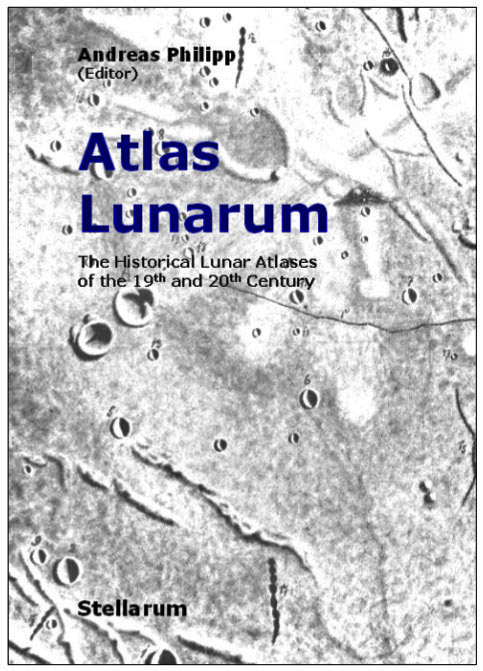January 18, 2018
What Technology is For
Originally published July 26, 2008

image from Atlas Lunarum
During the 19th and 20th centuries the best way to record observations of the Moon was by drawing. Only at the end of the last century did electronic imaging start to record features that had rarely before been seem from Earth. The electronic images are sometimes remarkable but the old atlases summarizing hundreds or thousands of hours of observing and sketching are testaments to almost unimaginable diligence and a belief that the recording of every detail would be scientifically valuable. None of the maps transformed our scientific understanding of the Moon, and none of the differences between maps was ever demonstrated to document a real change on the Moon. The observing to make the maps, especially that of Beer and Mädler in 1837 and Schmidt's magnum opus in 1878, did give Mädler and Schmidt an understanding of what features were on the Moon and their sizes and distribution. Mädler capitalized on that understanding to write a book, Seleonographia, that deduced many correct facts about the Moon. He realized that there was no water nor air, and that the lunar craters were different than Earth's volcanoes. His famous phrase, The Moon is no copy of the Earth, was a significant increase in knowledge. Schmidt's big book about the Moon presented a different type of knowledge. He reported on thousands of measures of the widths and depths of craters and other features. Although his crater depth measures were still used nearly 100 years later, they have been and are being replaced by more accurate ones. Schmidt was a data collector more than an analyst so that his numbers are of little importance now, but Mädler's conclusions still stand. Most lunar observers have never seen the original maps and books of Mädler and Schmidt, and Lohrmann, Neison, Fauth, Goodacre, Wilkins and Krieger. But now observers can own very high resolution scans of them. The Atlas Lunarum brings many of the major documents of lunar history to your computer. The cost for the two DVD set is $60 plus $15 for postage. I am going to order a set and everyone who loves the history of lunar mapping will want to as well. Even though I have some of these maps, the high resolution pdf images are easier to work with, and are far better than the photocopies I have others of the maps. We all own thanks to Andreas Philipp for compiling this valuable collection.
Chuck Wood
Technical Details
Samples of the map scans.
Related Links
Rükl plate 48
Yesterday's LPOD: Extreme Makeover
Tomorrow's LPOD: Linears
COMMENTS?
Register, Log in, and join in the comments.



